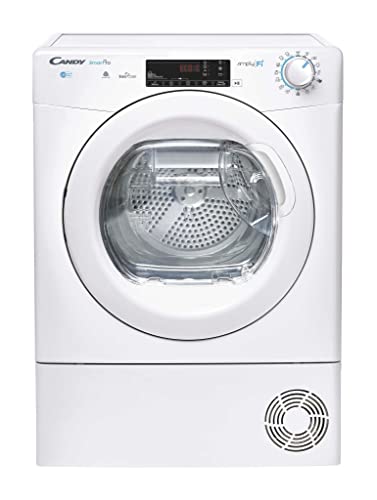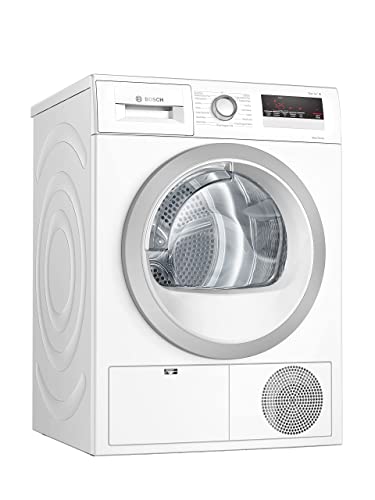The 12 Best Tumble Dryers Heat Pump Vs Condenser Accounts To Follow On…
페이지 정보

본문
 Heat Pump Vs Condenser Tumble Dryers
Heat Pump Vs Condenser Tumble DryersTumble dryers are available in a variety of different forms. John Lewis sells vented and condenser dryers both in-store and online. Their sales advisors are available to assist you with choosing the right one.
Vented models have to be connected to an external vent, while condenser machines don't and can be installed anywhere you'd like them to be placed within your home. Condenser models remove moisture by transferring hot air into a separate room and turning it into water, which is stored in a container that has to be cleaned regularly.
The dryers that are heated by a heat pump are more energy efficient
The modern laundry world has seen a variety of innovations, including tumble dryers that use heat pumps. These dryers are both efficient and gentle on fabrics. They also have more flexibility in their the location than vented or condenser models.
Dry clothes with a heat pump by collecting and recycling warm air. They do this by combing the functions of an air conditioner and a dryer. This process is extremely efficient in terms of energy consumption and doesn't require venting. This makes them an excellent option for those looking to save on their electricity bills and be eco-friendly.
Traditional dryers, on the other hand, utilize an air-flow device that blows hot air over the laundry that is tumbling. The hot air is discharged to the outside and replaced with ambient air. The result is that a conventional dryer uses a significant amount of electricity to dry laundry. Over time, this can result in higher utility bills. The dryers that use heat are more energy efficient and can reduce costs for utilities by up to 50 percent.
A heat-pump is also more environmentally friendly, as it uses less energy and water than a conventional dryer. It is more eco-friendly because it doesn't need a separate tank to store its coolant as gas dryers. Instead, it recycles the warm air taken from the dryer's drum.
Another benefit of a heat-pump dryer is that it does not need a duct, which could be a major issue for people who live in tiny homes or apartments without a laundry room. This means that you do not have to clean the duct at least every six months, which is typically required for traditional dryers. This can save a lot of time and effort for those who are already busy.
Although a heat-pump dryer might be more expensive than a conventional vented dryer at first but it could save families money over the long term because of its low operating costs. Peter McPhee, a senior director of the program at the Massachusetts Clean Energy Center, estimates that his family's heat pump dryer is saving them hundreds of dollars each year.
Look for a heat pump dryer that has sensors that can detect when your laundry is finished and stops the cycle. This will help you save on energy costs and also reduce the amount of drying, which can damage the fabric. It is also recommended to look for a dryer that comes with a lint screen and a condenser coil. These parts should be cleaned frequently to maintain optimal performance.
Quieter
The newest tumble dryers are more quiet than vented models, and especially those with heat pump technology. They are able to achieve this because they circulate warm air inside the laundry instead of blowing it outside. This makes them ideal to be used in open plan spaces and smaller homes. They also tend to be more gentle on clothing. Due to the lower temperatures, it might take a bit longer them to dry.
The biggest drawback with dryers that use heat pumps is that they are more expensive to purchase than vented tumble dryers. This can be a deterrent for those who are price-conscious. They are more efficient in energy use and green. They are also gentler on your clothes and Tumble Dryers Heat less likely to catch them or shrink them. They are also simpler to use and come with more programmes than traditional vented dryers.
The models that use heat pumps are the best option for homes that have little space or are unable to make structural modifications. This is especially useful if you reside in an apartment or rent your house. Additionally, they're a good option for those who are sensitive to humidity and want to stay clear of mold or mildew.
The heat pump dryer works in a similar manner to heat pumps, by extracting vapor out of your clothes and turning it into water. The vapor is recycled back into dryer and, because it consumes less energy than conventional tumble dryers, it's a green alternative. The dryers that use heat pump technology also operate very quietly, so you can rest while your laundry is drying.
The tumble dryers with heat pumps have some disadvantages, including the higher cost of initial installation and a slower drying process. However their energy efficiency, superior and gentle care for fabrics, make them worth the extra cost in the long term. These features make them an excellent choice for households with busy schedules, and there are various models to fit every budget. It's important to take into account your habits of use and also the total cost of ownership (purchase and running expenses) in deciding what model is best for you.
They are more flexible
If you're looking for a tumbler that's more efficient in energy use and gentle on your laundry, you should consider a heat pump dryer. These dryers make use of recycled hot air to drier your laundry, saving you money in the long run. These dryers are not just more sustainable but can also be used in rooms with adequate ventilation without the need for vents outside. They also require less space than vented dryers. They may take longer to finish drying your laundry than a vented model.
The traditional vented dryers heat the drum with gas and then expel moisture. Although they're less efficient than condenser and heat pump models, they require less power than other dryers. They are also a great choice for homes with limited energy requirements.
Condenser and heat pumps utilize a heat exchanger to convert warm air into hot and reduce the energy use by a quarter. They also have a lower noise level than other tumble dryers and some models have dampening systems to lower the amount of noise that they operate at. They can be stacked with a washer to reduce space, and a lot are suitable for wall-mounting.
Heat pump tumble dryers use a combination solar and conventional energy source for their laundry cycle. It can cut down on energy costs by up to 50% when compared to a vented tumble dryers heat pump dryer. It can also be paired with an electric heater to improve efficiency. Heating systems can be expensive if they are used for a large amount of laundry.
While they may cost more upfront than vented dryer, heat pump tumble dryers have lower operating costs and provide greater flexibility. They're also user-friendly and come with a vast range of programmes, including features for ironing and anti-crease. These dryers can be utilized in a variety of spaces and are typically recommended to people who live in apartments. They are also suitable for those who live in an area that has poor air quality or who want to lower their carbon footprint. The ideal tumble dryer will be contingent on the habits you have and your budget as well as the space you have available.
They are more expensive
As the name suggests, heat pump dryers employ a combination of heating and cooling technology to dry your clothes. They are more energy efficient than vented tumble dryers, and can save you money on your electric bills. They are also more quiet and gentle on your clothes. They are more expensive up front than vented models. The energy savings offset this price difference.
The dryers that use heat pumps have a special heat exchange system that re-uses the hot air that warms your laundry. This can reduce energy consumption by up to 15%. They can also save time and money, by sensing and adjusting the cycle according to the amount of moisture in your laundry. They have less impact on the environment than vented tumble dryers.
The Beko DPHR8PB561W Heat Pump Tumble Dryer, 8Kg is a great example of a quiet, highly efficient heat pump dryer. It is ideal for small to medium-sized homes. It is A+++ rated and has a big capacity for your normal washing needs. It is easy to use because it comes with a range of programs that are automated. It will determine how wet your laundry is and determine the best drying time for each load. The dryer will inform you when it's finished so you don't have to worry about overdrying your clothing.
Condenser and vented tumble dryers discharge humid air into the laundry room or out through an extraction hose. The Tumble Dryers Heat dryers with a heat pump do not require an extraction hose since they reuse the heat from the air. They recirculate the warm moist air and then collect it in the form of a reservoir or funnel it into the drain.
They do take longer to dry a load of laundry than vented dryers. However, the extra time is worth it for their energy efficiency and gentler treatment of your laundry. They are more sustainable for the environment and less expensive to run over the long haul than vented dryers, which are not able to reuse heat and thus require more energy.

- 이전글애니토렌트▷ 토렌트쓱.COM 음악토렌트 음악 토렌트✧음악 토렌트 24.04.24
- 다음글주소모음 링크고.COM 주소 모음(링크고)무료웹툰✻주소모음 24.04.24
댓글목록
등록된 댓글이 없습니다.

